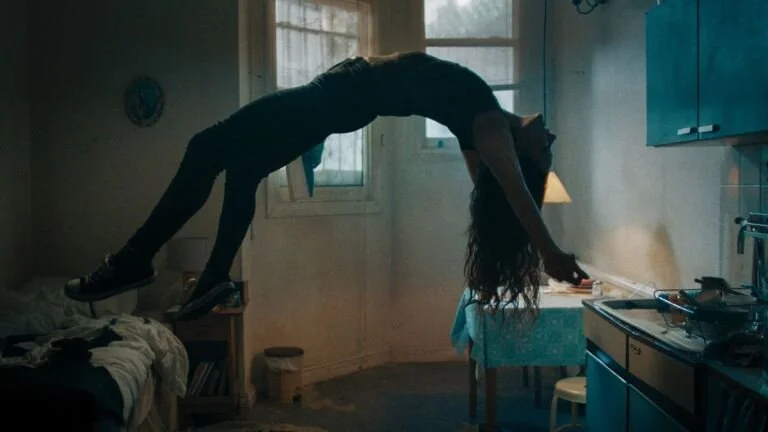SAINT MAUD
Directing: B+
Acting: B+
Writing: B
Cinematography: B
Editing: B
I spent a lot of Saint Maud thinking about how I couldn’t quite decide how I felt about it. This movie is the very definition of a “slow burn,” to the point that, if you were channel surfing and happened upon it at any point during, say, its first third, you’d be liable to get bored quickly and move on. That’s not exactly a ringing endorsement, is it? “You should watch this movie, it’ll take a while to get into it!”
I’ve seen many movies this slowly paced that featured an ending worth waiting for. This one, I still can’t decide. The parting shot, just before the credits, is deeply memorable. But it literally lasts less than a second. Still, it did make me say “Oh my god” out loud. Maybe that was precisely the intent of writer-director Rose Glass. I’ll give her this much: it’s a strong piece of work by typical first-time-feature-director standards.
That said, Saint Maud is almost too cerebral for me, almost self-consciously so, and I felt it lacked clarity. There is certainly an effectively eerie tone from start to finish, vaguely reminiscent of some of the best horror films of the seventies—that similarity extending to the intensely religious themes. The key difference in this comparison though, is that so many of those old religious horror movies operated on the premise that God and Satan, and demons, were real.
Are we meant to believe what Maud (Morfydd Clark, well cast) is seeing and experiencing is real? There is a bit of clarity lacking here. Maud is a recently-converted and insanely pious nurse, hired as in-home care for Amanda (Jennifer Ehle), a former professional dancer now in the final stages of cancer. Maud becomes convinced that God has given her a calling to save Amanda’s soul, and at first, Amanda appears to take her seriously. But really, Amanda is just amusing herself: “You have no idea how dull it is to be dying.”
Well, it’s certainly not dull to be Maud. As the movie wears on (at a mere 84 minutes, thank god, lest this film itself become unbearably dull), she has visions, even hears God speaking to her. She takes on physical pain as an act of piety, in one difficult to watch scene, stepping into her shoes with upstanding nails inserted into them. There’s an earlier scene between Maud and a panhandler with a line I won’t soon forget: “May God bless you and never waste your pain,” she says to him. This, in a way, is the theme of the film, at least from Maud’s perspective.
The choice I made, quite easily, was that Maud was having hallucinations. Perhaps Saint Maud is about the dangerous power of self-delusion. Still, if we assume that, then is this movie about a young woman suffering mental illness? There is never any discussion of medication or the like—only an unspecified incident that resulted in Maud no longer being employed at the hospital where she used to work. It’s difficult to decipher precisely what kind of portrait is being painted here.
If nothing else, it is clear that no other character experiences the otherworldly or supernatural things that Maud does, even while in the same room. An old coworker stops by Maud’s apartment on her own way to work, and ironically babbles on about how they are all in their own bubble, while never registering the bizarrely quiet calm with which Maud just stands there, staring at the window.
Whether it’s in her head or not (it is), some fantastical things do occur in this movie. They just come few and far between, and be warned, nothing exciting whatsoever occurs in the first act. We just meet the characters, Maud and then Amanda, but also a couple of Amanda’s friends (including a young woman, played by Lily Frazer, who comes by for romantic trysts). For the most part, the cast here is very small: maybe half the movie features only the two leads.
And then, there is a jarring scene in which Amanda challenges Maud’s very faith, offering it a blithe dismissal: “He isn’t real.” I won’t say that making either of these characters likable was necessary, but it might have helped the film. There are moments when each of them seems to think they have compassion for the other, but in both cases they are profoundly self-involved, if in very different ways. And in this particular scene, it veers into one of the few sequences where genuine visual effects are involved. They aren’t especially impressively rendered, but given how sparingly they’re used, it doesn’t much matter.
What does matter, I suppose, is how Saint Maud stays with you after its brief but startlingly memorable end. The trick is in remaining engaged enough to get there.
Oh come off it, Maud, no need to break your back on your invisible high horse.
Overall: B
(Streaming on Amazon Prime Video.)

